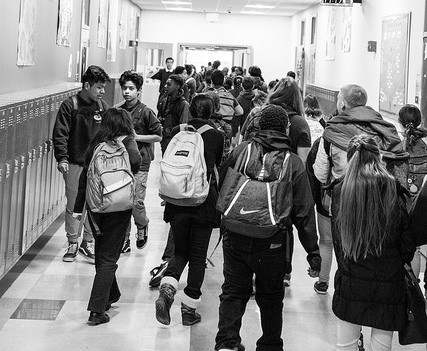Special Education is an Equity Issue and it Requires Investment

By Bree Dusseault
Last month, The Seattle Times asked whether charter schools in Washington truly serve students with special needs. Data showed that the answer was a resounding “yes” – a reflection of both the state’s well-designed charter school law working in practice, and charter school operators’ commitment to accepting and assisting students from all backgrounds and academic needs.
Our public education system was always meant to be the great equalizer in this country – the path by which every child could pursue the bright future they deserve. That is the promise we make as educators and schools: no matter a student’s circumstances or needs, we provide them the tools and resources they need to have a fair shot at success.
That promise is especially important for students with special needs.
As the Executive Director of Green Dot Public Schools Washington, I’ve seen this first-hand. Green Dot runs public schools aimed at closing the opportunity gap here in Washington, California and Tennessee, and students enrolled in special education programs comprise an average of 15% of our student bodies across all three regions, including 20% of our students in Washington. This is nearly one and a half times the Washington state average of 14%.
While we serve a disproportionately impacted population, our mission remains to prepare all students for college. This year, Green Dot Washington students with special needs scored on average 1.5 times higher their national peers on the Measures of Academic Progress (MAP) NWEA assessment, and many graduates of our founding 8th grade class who have special needs were admitted into local selective magnet high schools.
As we’ve come to a better understanding of the special education approaches that are effective at Green Dot, we want to share three key lessons from our special education work over the years:
Success requires investment in resources and schools. Special education programming must be viewed through the lens of equity and access. Historically and consistently, the systematic lack of opportunity and access to resources for students with special needs has impacted student outcomes and resulted in unacceptable opportunity gaps.
This is especially true in lower-income neighborhoods, where economic and health inequality make it increasingly difficult for students of different abilities to access an education suited to their needs. There is also a problematic conflation between race and ability – with students of color over-identified in special needs categories. These systemic biases and disadvantages are a fundamental hurdle for any school seeking to effectively serve its students with special needs.
Schools need to be flexible and adaptable – and personal attention counts. Quality education for all students is rooted in the understanding that there is no single formula that works for every child. Each student’s set of circumstances outside the classroom profoundly impacts their needs within its four walls – whether or not they have unique requirements in terms of physical or academic abilities. Green Dot addresses this by building school-specific special education programs in response to students’ needs each year, rather than fitting students into a standardized education program designed for the average.
We can and must expect the most from our students, and ourselves in serving them. We cannot and should not allow educational systems to hold students with special needs to a different, lower standard; rather we should hold ourselves responsible to finding the educational solutions necessary to ensure all students meet the same expectations of educational attainment.
Green Dot provides a full inclusion learning environment for our students with special needs, giving access for all to an integrated, academically rigorous and supportive educational experience. We hire staff who are passionate about this commitment and responsibility, and we provide over 250 hours of professional development a year to ensure teachers and administrators are supported in this work.
Consider the right metrics for success. It’s worth noting that tracking students’ growth is as important as tracking absolute performance. Since students enrolled in special education are historically under-resourced and often multiple years behind, an emphasis on growth – on how much a student is able to improve year-over-year – critically informs the story of effective academic programming as well as areas for improvement.
Ultimately, driving success in special education comes down to funding and investment in schools committed to serving students from all backgrounds and academic needs. That includes Washington charter schools, 80% of which serve a higher proportion of special needs students than traditional schools, but receive less state funding per student.
All does not mean all if any of our students, including those with special needs, are not given the resources, programming, and metrics that drive success. It’s on us to step back, reflect, and assess our responsibilities as a collective to best serve all learners.
The author was Executive Director of Green Dot Washington.
Read more about Special Education